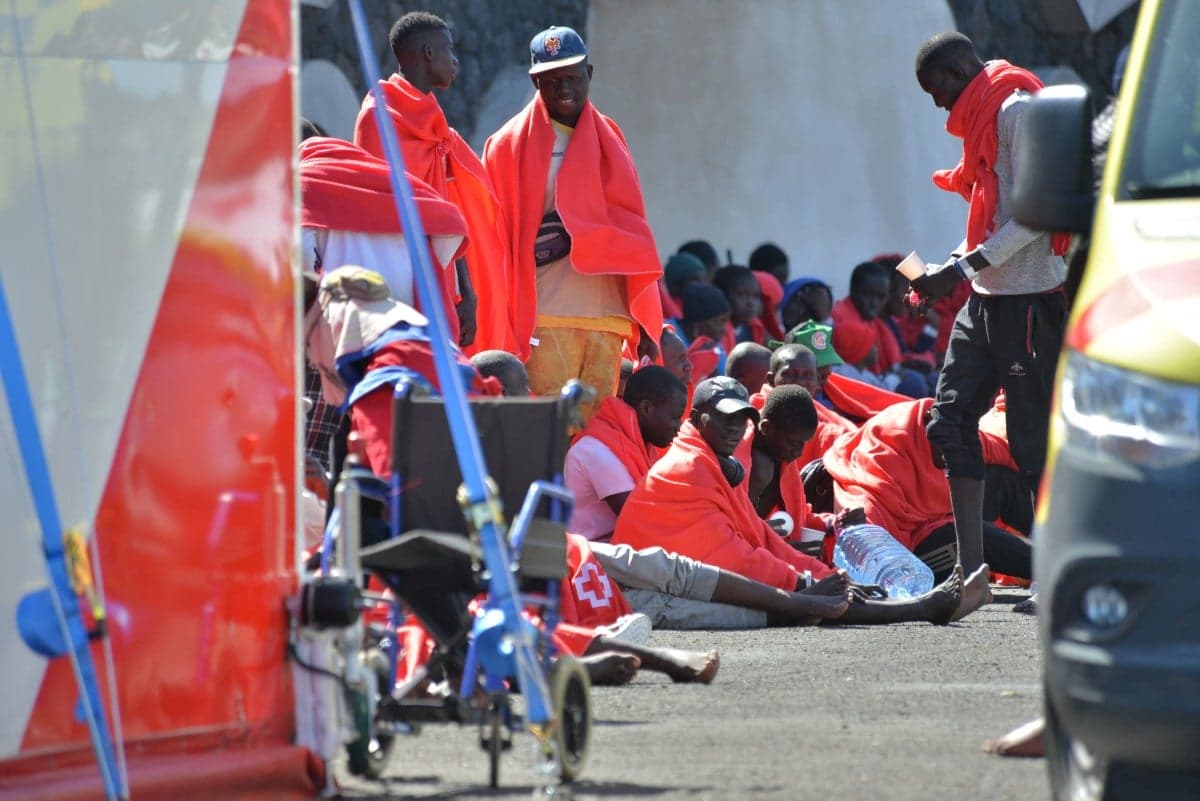A group of tired migrants struggled to pull themselves up onto the harbour of La Restinga, a fishing village on the tiny island of El Hierro in Spain's Canary islands.
Some collapsed from exhaustion and were aided by Red Cross staff. One was led away on a wheelchair as tourists ate at restaurant terraces just metres (yards) away.
"It's incredible to see how people can continue to eat prawns and squid while a migrant boat arrives just behind them," said Javier Iglesias, the owner of a restaurant at the port, which has a black sand beach and diving centre.
"Thousands of people have arrived in recent days, including children and babies," he added.
El Hierro, the most westerly of Spain's Canary Islands in the Atlantic, is grappling with an unprecedented surge in migrant arrivals from Africa which have overwhelmed its social services.
The 6,000 who have arrived since January 1st according to official figures account for about one quarter of the nearly 26,000 migrant arrivals in the Canary Islands during this period, a nearly 80 percent increase from the same period last year and close to the record levels set in 2006.
The boats keep coming.
Saturday saw a wooden vessel packed tight with 321 migrants reach the island, the largest number yet to arrive in a single vessel in the seven-island archipelago located off the northwest coast of Africa.
 Sparsely populated El Hierro doesn't have the resources to take care of such high numbers of migrants. (Photo by DESIREE MARTIN / AFP)
Sparsely populated El Hierro doesn't have the resources to take care of such high numbers of migrants. (Photo by DESIREE MARTIN / AFP)
'Not normal'
"El Hierro is becoming Lampedusa," said the head of the archipelago's regional government, Fernando Clavijo -- in a reference to the small Italian island in the Mediterranean that has long been a prime transit point for migrants seeking a better life in Europe.
He has demanded Spain's central government give the island more financial aid to help it cope with the influx, and speed up the transfer of migrants to facilities on the Spanish mainland.
"It is not normal that they arrive in El Hierro. The journey is much longer and more dangerous," said Maria Jose Meilan, director of the morgue in Las Palmas, the main city of the Canary Islands.
She is the one often called in when the bodies of migrants are found.
Calmer seas have triggered the increase in the number of migrants trying to reach the Canaries from Mauritania and Senegal in recent weeks, experts say.
And to avoid stepped up controls in the waters off the two African countries, human traffickers are taking risks and are sending boats further away from the coast.
This makes them more likely to end up in El Hierro, which is some 400 kilometres (250 miles) off Africa's western coast, a police source told AFP.
 Cayuco boats may not be big but a record 321 people arrived on board on in the Canaries this October. Photo: JOHN WESSELS/AFP
Cayuco boats may not be big but a record 321 people arrived on board on in the Canaries this October. Photo: JOHN WESSELS/AFP
'It's death'
Abdou Manaf Niane, a 16-year-old from Senegal who arrived in El Hierro in June after spending seven days at sea on a boat with 153 other people, does not like to say much about the perilous crossing.
"We ate, we slept, that's all... If I had died, that's okay," he tells AFP in the neighbouring island of Tenerife where he now lives.
The risk of dying is high.
A migrant boat can end up drifting further west and miss El Hierro altogether "if it runs out of fuel or if they can't orient themselves or if they are not picked up by maritime rescuers," says Ferrán Mallol, a Red Cross volunteer in La Restinga.
"If you go too far... it's death," says Juan Carlos Lorenzo, a coordinator with the Spanish Commission for Refugees, a non-governmental organisation also known by its Spanish acronym CEAR.
Two years ago, a migrant boat which departed Mauritania for the Canary Islands ended up drifting all the way to the island of Tobago in the Caribbean.
The bodies of around a dozen dead migrants were found on board.

Join the conversation in our comments section below. Share your own views and experience and if you have a question or suggestion for our journalists then email us at [email protected].
Please keep comments civil, constructive and on topic – and make sure to read our terms of use before getting involved.
Please log in here to leave a comment.